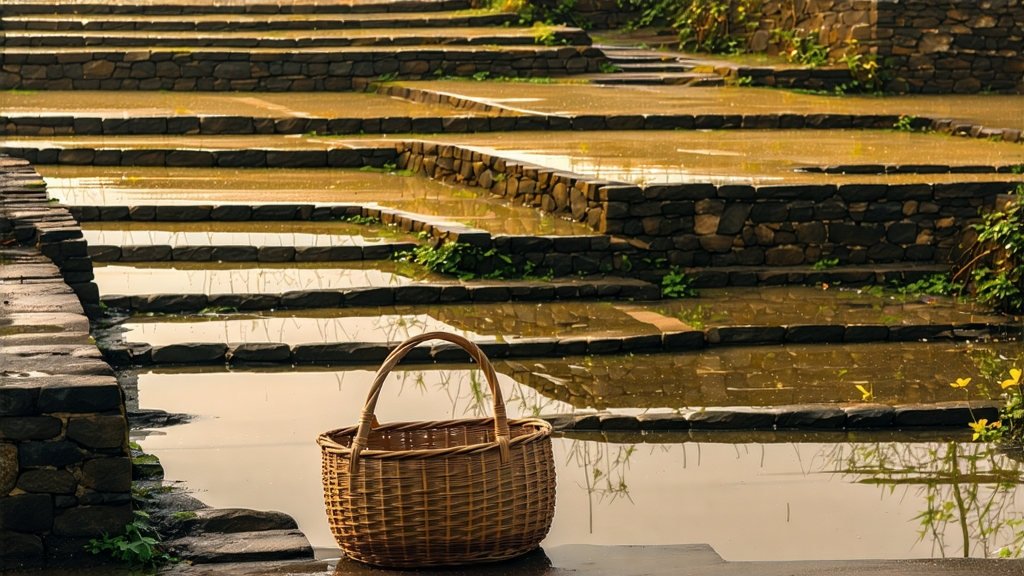
Tucked high on the northern rim of the Sichuan Basin, where the Min River carves clouds into the shoulders of Meng Ding Mountain, a tea once reserved for emperors still awakens each April in a hush of yellow-green buds. Meng Ding Huang Ya—literally “Yellow Bud of Meng Ding”—is the least-known yet most aristocratic member of China’s yellow-tea family. While dragon-well greens and rock oolongs travel the world in glossy tins, these downy tips remain hidden in bamboo baskets, their fragrance locked behind a slow, 2 000-year-old ritual called men huang—“sealed yellowing.” To taste them is to sip the quiet side of Chinese history.
History: from altar of the gods to palace bowls
Meng Ding’s tea story begins in 53 BCE, when the Daoist adept Wu Lizhen planted seven tea bushes on the summit, declaring them “celestial herbs.” By Tang dynasty (618-907) those bushes, still alive today, were taxed as “immortal tribute.” When Song emperors moved their capital to nearby Chengdu, the buds were carried in silk-lined palanquins along plank roads to the palace, arriving still fragrant from mountain mist. The Ming court formalized the colour-coded tribute system: green for spring, yellow for the emperor alone. A special bureau was created in 1391 to supervise the yellowing process, and Meng Ding Huang Ya became the first tea in China to be protected by imperial edict. After 1911 the craft nearly vanished; only three families on the mountain remembered the full recipe. Rediscovery came in 1978 when a Sichuan agricultural team found an aged parchment titled “Meng Ding Cha Lu” hidden inside a Buddhist sutra. Today fewer than 600 kg reach market annually, most pre-sold to collectors in Beijing and Tokyo.
Micro-terroir: where cloud and stone collaborate
The garden zone sits between 800 m and 1 400 m, above the perpetual Sichuan fog but below the winter snow line. Granite parent rock weathers into acidic, quartz-rich soil that drains in minutes yet holds moisture like a sponge. Diurnal swing can exceed 15 °C within a single spring day, forcing the buds to thicken their cell walls and concentrate theanine. Wild camphor and gingko trees release terpenes that settle on tea leaves at night, adding a cool, mint-veined top note unique to this slope. Because the mountain blocks the monsoon, rainfall arrives as gentle mist—ideal for the slow withering yellow tea demands.
Pluck: one bud, no leaf, before the orioles sing
The harvest window opens when 5 % of the buds show a faint yellow seam at the base—roughly 20 March to 5 April. Pickers climb 4 000 stone steps before dawn, wearing woven straw shoes to avoid bruising the turf. Each worker carries a tiny bamboo tube tucked into the waist; buds drop 2 cm to avoid compression. The standard is “jin lian wei” – golden lotus tail – a plump bud 15–20 mm long, still sheathed in pale down, heavier than it looks. Three hours later the crop is weighed on a mountain-top scale; anything under 30 % moisture is rejected, ensuring the enzymatic journey will be uniform.
Craft: the art of letting the tea suffocate gently
Yellow tea’s soul lies in men huang, a controlled re-absorption of its own moisture. Meng Ding masters divide the process into five breaths:
- Sha Qing – “kill-green” at 140 °C for 90 seconds in a bronze wok shaped like an inverted bell. The goal is partial denaturation: 15 % of the polyphenol oxidase must survive for later steps.
- Re Shang – hot wrapping. The leaves are piled 3 cm deep inside linen bags and placed on a 45 °C bamboo tray. Every 15 minutes the master shakes the bag, listening for the rustle that signals moisture redistribution.
- Men Huang – sealed yellowing. Buds are transferred to oak boxes lined with wet paper made from local bamboo. Lids close, leaving a 2 mm gap. Over 48 hours the temperature drifts from 35 °C to 28 °C; humidity stays above 85 %. Chlorophyll breaks down into pheophytin, catechins dimerize, and